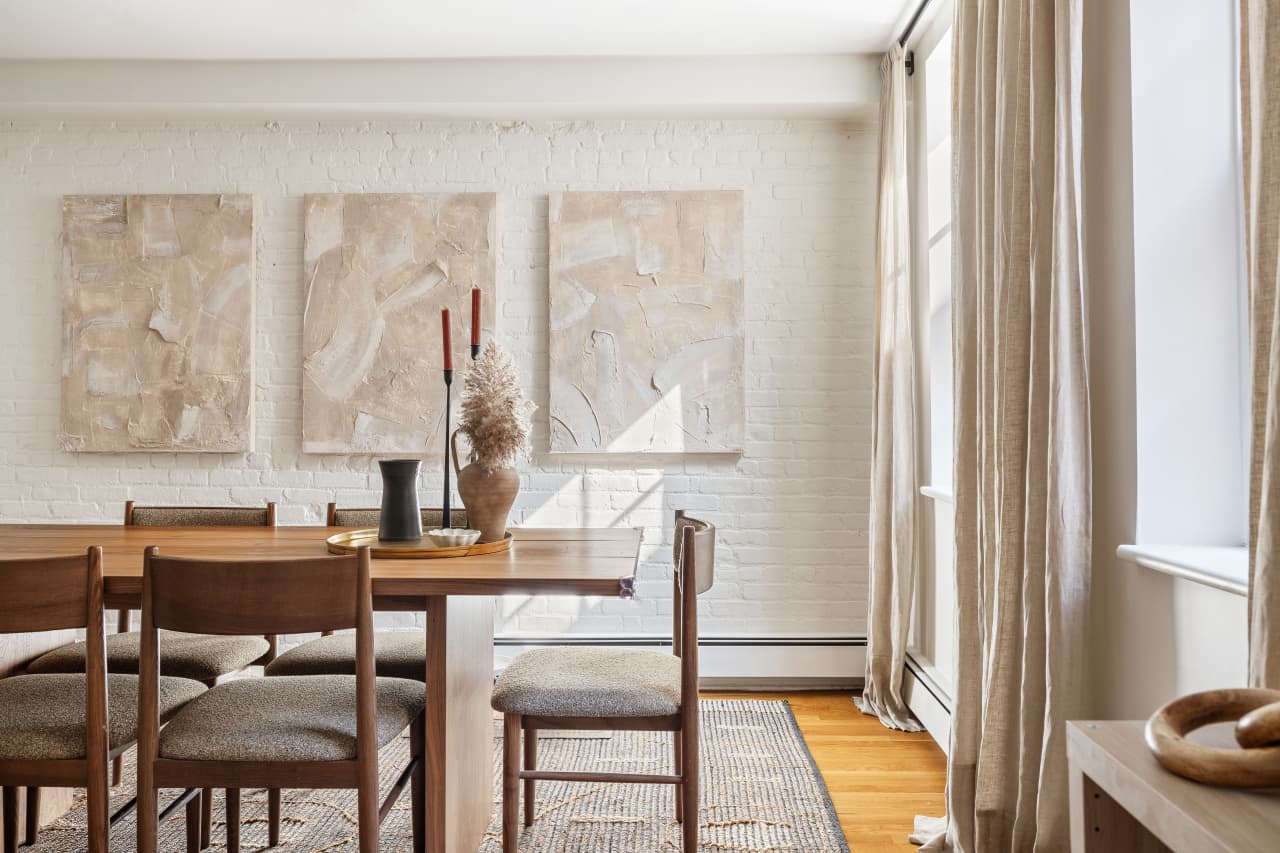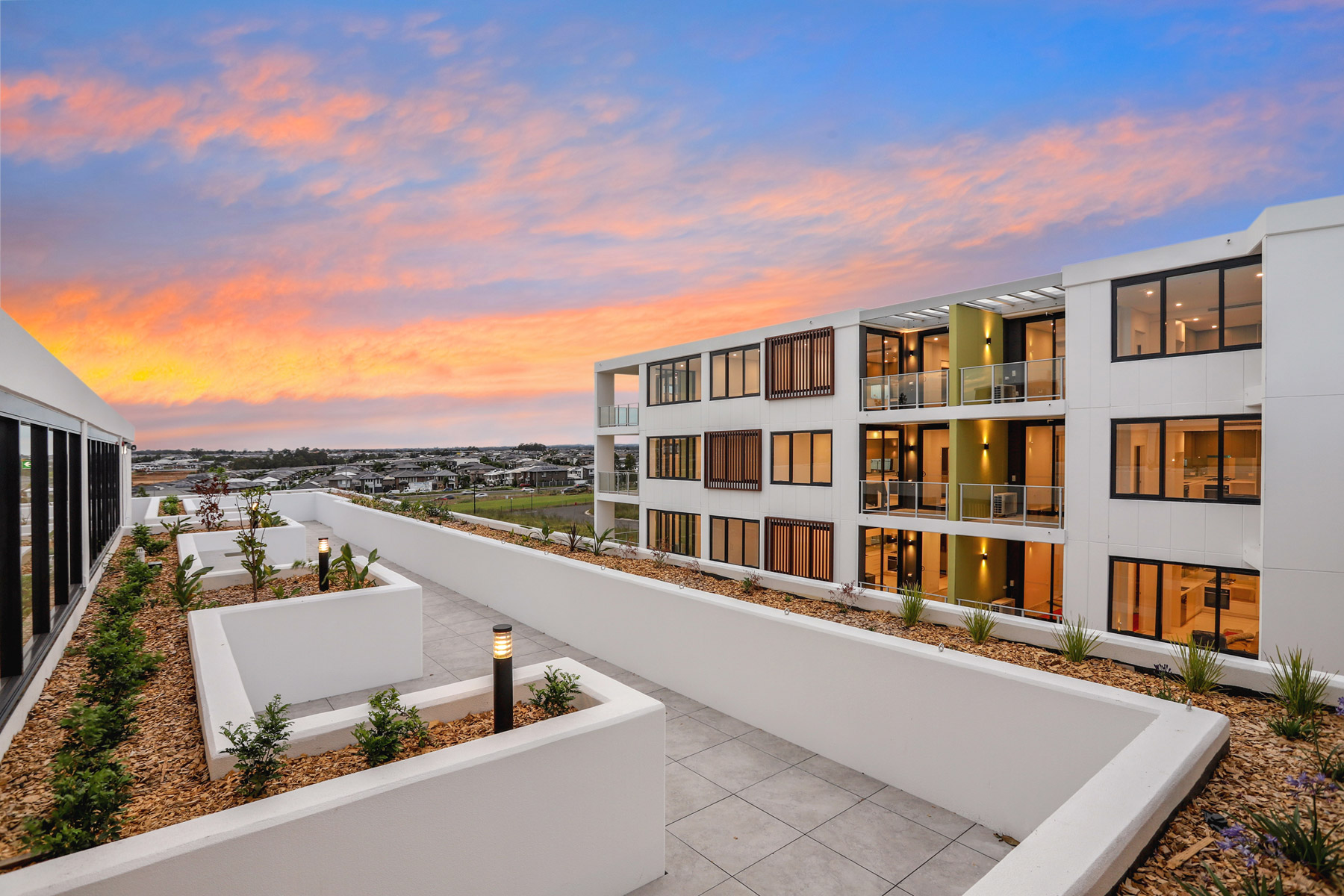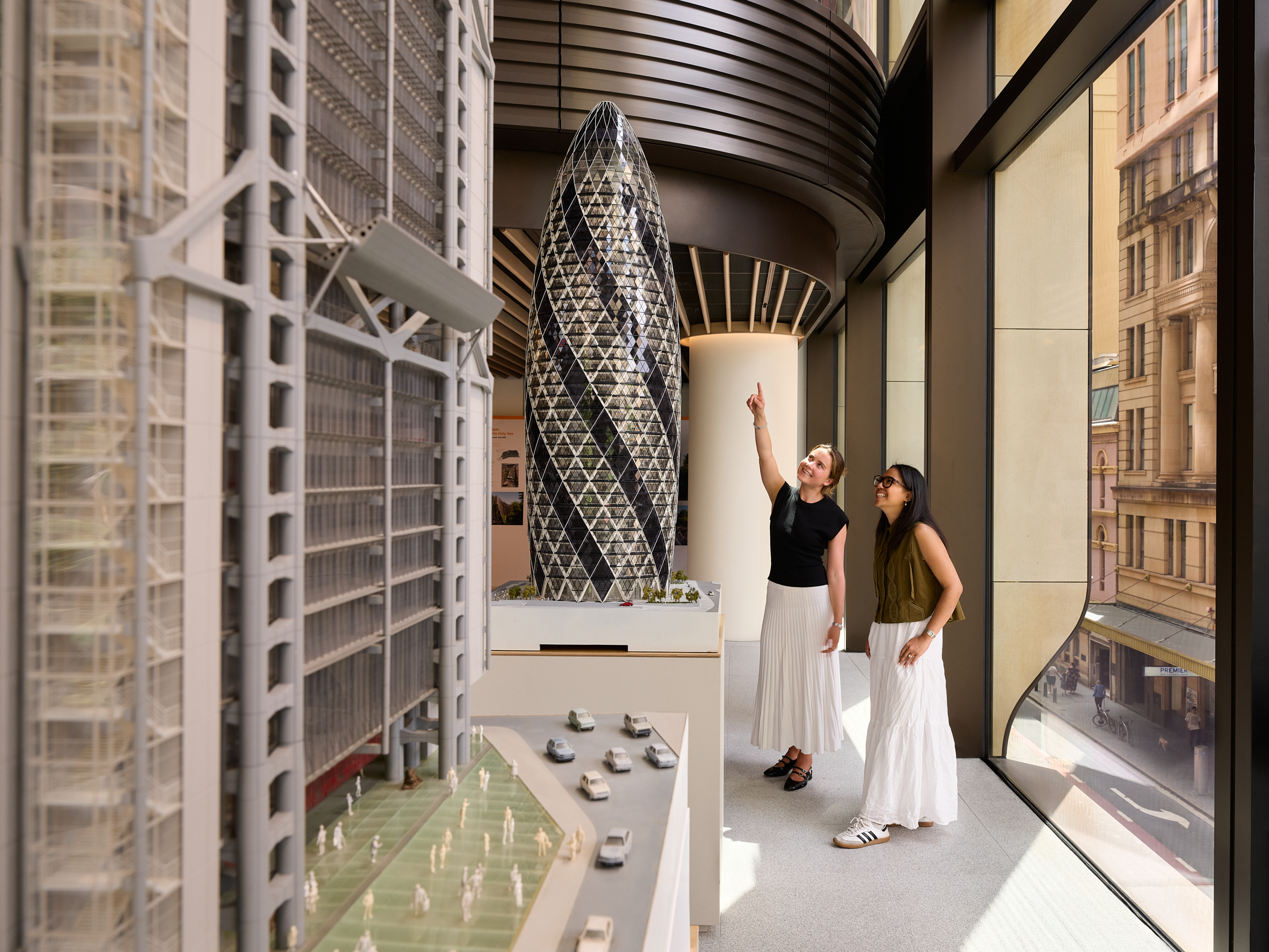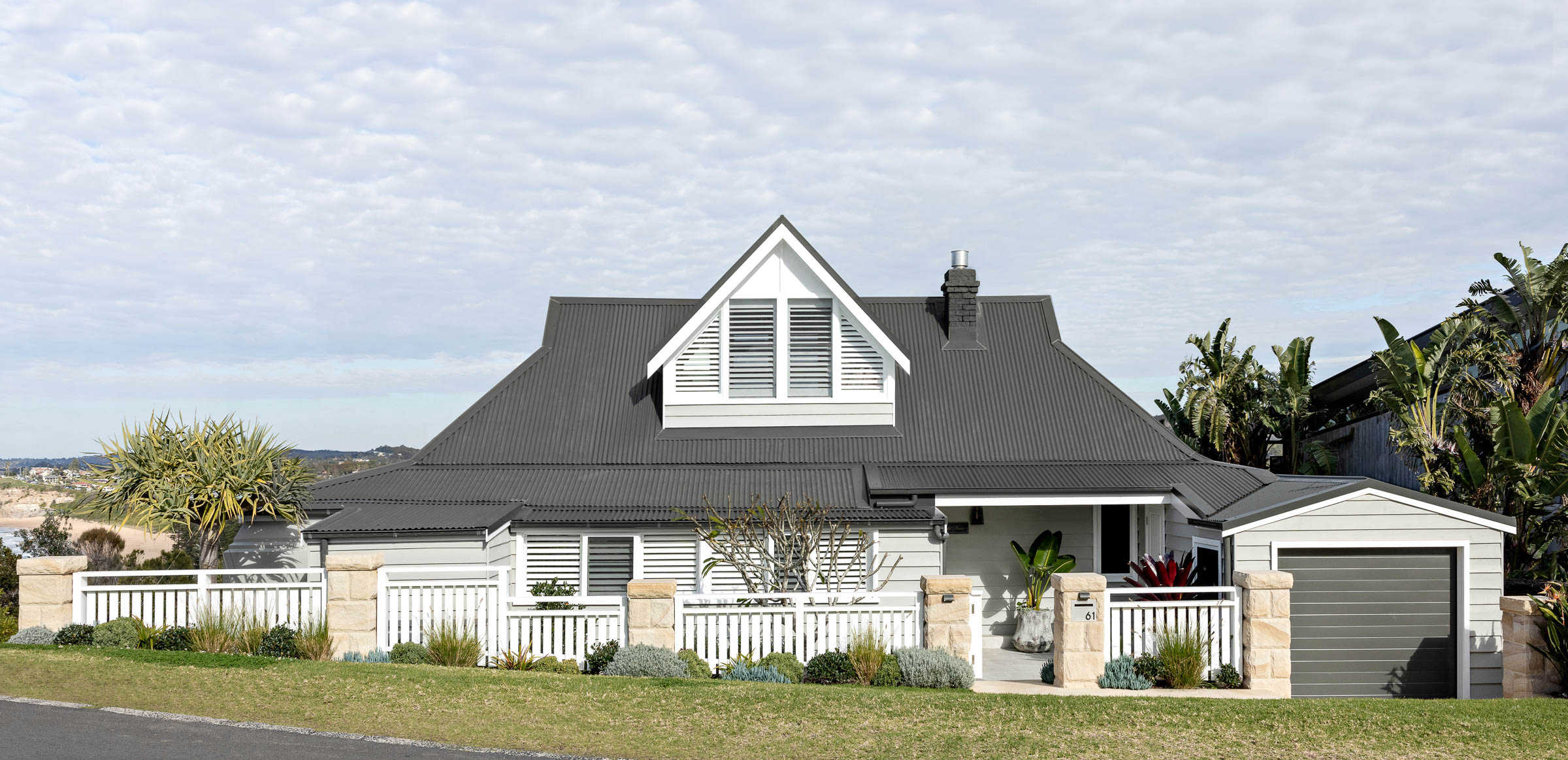From a Gangster’s ‘Rat Pit’ to Sunny Condos: Duplex Atop the Third-Oldest Building in Manhattan Lists for $US1.825 Million
The 250-year-old structure in the South Street Seaport District had a colorful past before a developer converted it to apartments in the 1990s
An apartment atop the third oldest building still standing in Manhattan has hit the market for $1.825 million.
The two-bedroom duplex occupies the top two floors of the Captain Joseph Rose house in the South Street Seaport District, the third oldest building in Manhattan after the Morris-Jumel Mansion in Washington Heights and St. Paul’s Chapel near the World Trade Center. In 1773 it was a fashionable two-story home for Rose, a successful lumber merchant, but its more colourful history came a century later, during the Civil War era, when it was the site an infamous saloon known as “Kit Burns’ Rat Pit,” run by one of the founders of the Dead Rabbits gang.
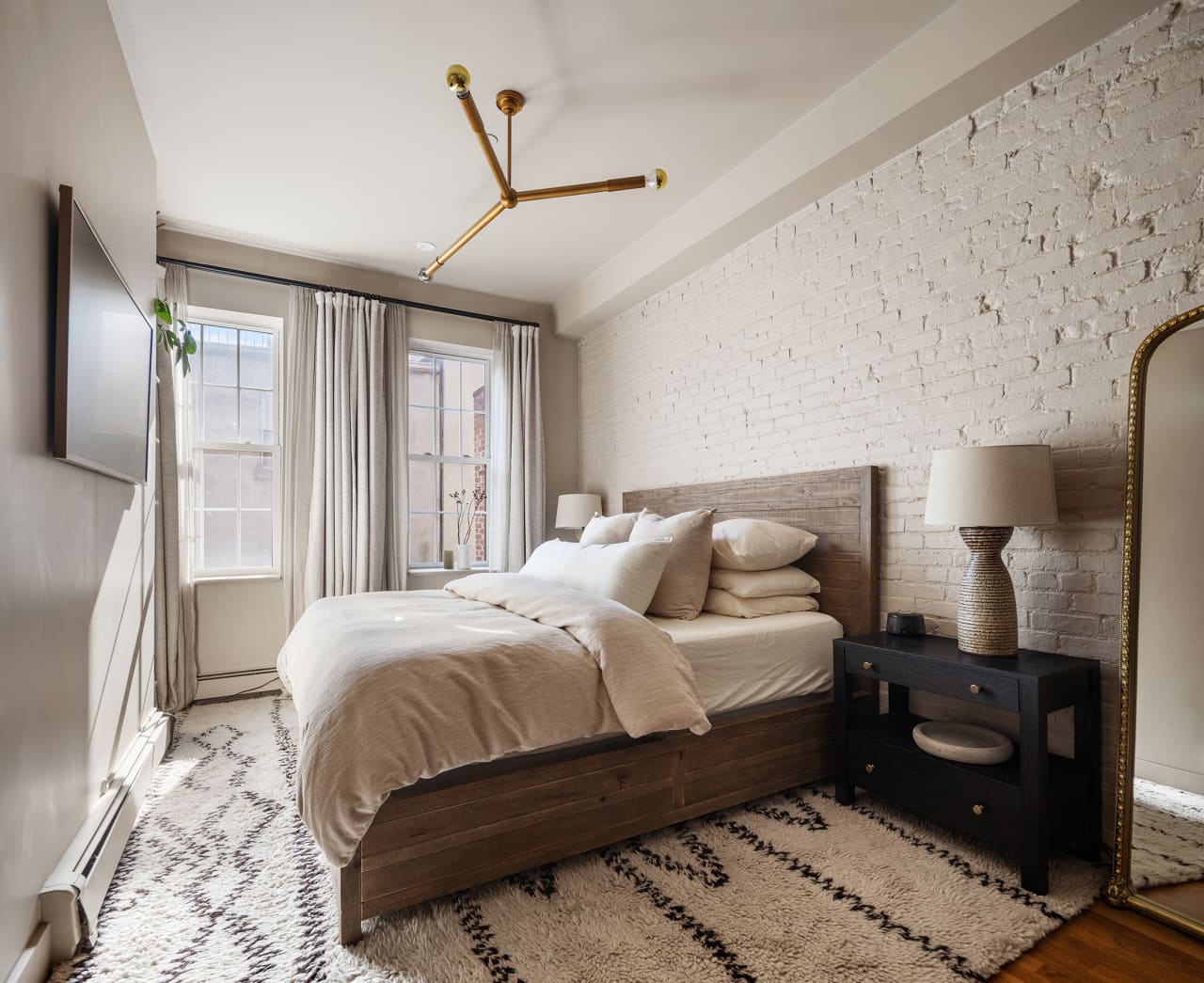
Today, the 1,424-square-foot unit shows few signs of its unsavoury past. Located on a cobblestoned side street, the building still retains its brick facade and original Georgian-style, but the upper floors were added after a fire in 1904, and the interiors were completely restored by architect Oliver Lundquist when the building was converted to condos in 1997.
The sellers, who purchased the unit for $1.575 million in 2022, listed the property with Lindsey Stokes and Allison Venditti of Compass on Tuesday.
When Rose built the home on Water Street, the isle of Manhattan was smaller, and the home had direct access to the East River where he docked his merchant ship, Industry . By the turn of the century the ground floor had been converted to commercial use, and it was used as an apothecary, a cobbler shop, a watchmakers’ shop and a grocery.
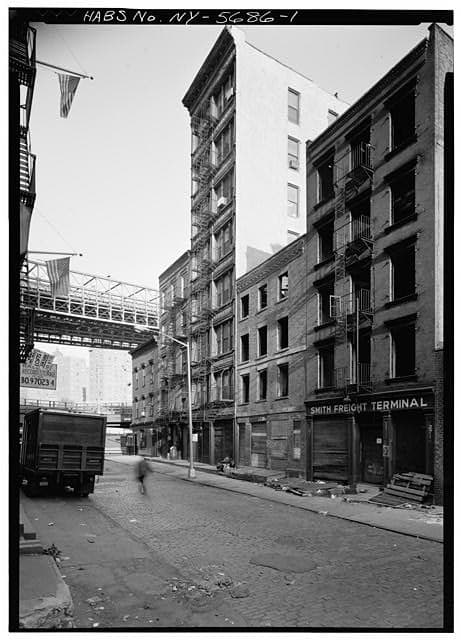
Library of Congress
By the 1860s, the bustling South Street Seaport had begun to decline as shipping lines moved to larger ports along the Hudson River, and the neighbourhood deteriorated. The Joseph Rose building was purchased by Christopher “Kit” Burns, who opened a saloon called Sportsman’s Hall, a den of vice most notable for its rat pit—the largest in the city—where Burns staged “rat baiting” events, in which caged dogs compete to kill rats while spectators bet on the outcome.
Journalist James W. Buel described Sportsman’s Hall in a book on American cities published in 1883. “This place was once an eating cancer on the body municipal,” he wrote. “Within its crime begrimed walls have been enacted so many villainies, that the world has wondered why the wrath of vengeance did not consume it.”
In 1870, the saloon was shut down by the authorities, and Burns leased the building to the Williamsburg Methodist Church, which used it as a refuge for women. Burns, meanwhile, opened a rat pit down the block at 388 Water St.
As the years progressed, the building suffered fires in 1904 and again in 1976, after which it fell into disrepair and was seized for unpaid taxes. In 1997, the city sold the neglected building to developer Frank Sciame Jr. for just $1, who restored it and converted it to luxury condos.
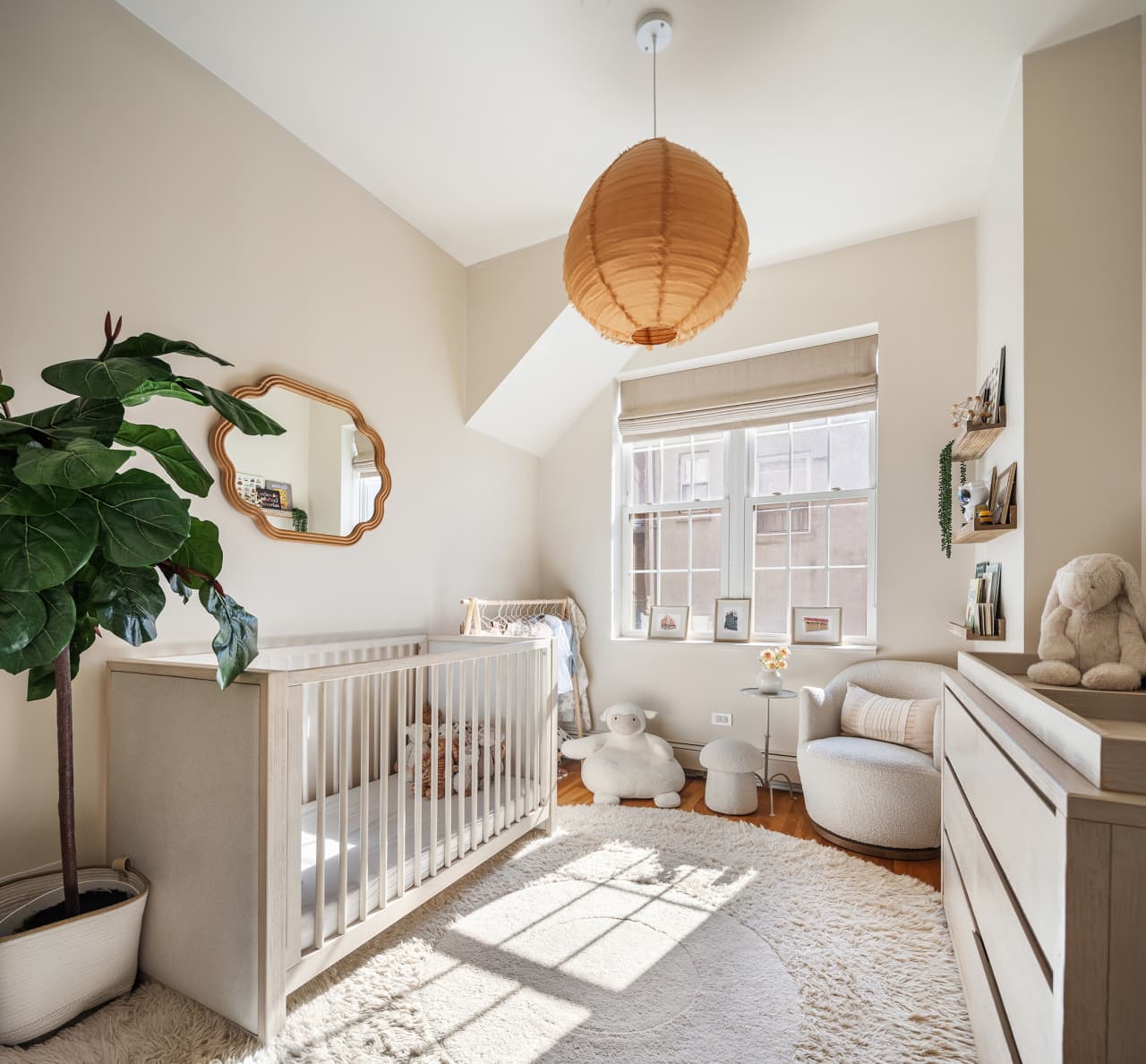
The upper unit has traded hands several times in the decades since. Currently, the unit begins with a foyer that leads to an open plan living and dining area on the main level, with a staircase leading to two bedrooms on the upper level, and a private rooftop.
After purchasing the unit, the sellers worked with designer Lauryn Stone to renovate the upper level, reconfiguring the floor plan and remodelling the primary bathroom, according to Stokes. The interiors feature finished white oak floors and painted brick walls, with built-in shelves and a ventless fireplace in the living room, stone counters in the kitchen, a walk-in closet off the primary bedroom, and two rows of six-over-six panelled windows adding light and air.
 Copyright 2020, Dow Jones & Company, Inc. All Rights Reserved Worldwide. LEARN MORE
Copyright 2020, Dow Jones & Company, Inc. All Rights Reserved Worldwide. LEARN MORE
Records keep falling in 2025 as harbourfront, beachfront and blue-chip estates crowd the top of the market.
A divide has opened in the tech job market between those with artificial-intelligence skills and everyone else.
The 2026 McGrath Report warns that without urgent reforms to planning, infrastructure and construction, housing affordability will continue to slip beyond reach for most Australians.
Australia’s housing market has reached a critical juncture, with home ownership and rental affordability deteriorating to their worst levels in decades, according to the McGrath Report 2026.
The annual analysis from real estate entrepreneur John McGrath paints a sobering picture of a nation where even the “lucky country” has run out of luck — or at least, out of homes.
New borrowers are now spending half their household income servicing loans, while renters are devoting one-third of their earnings to rent.
The time needed to save a 20 per cent deposit has stretched beyond ten years, and the home price-to-income ratio has climbed to eight times. “These aren’t just statistics,” McGrath writes. “They represent real people and real pain.”
McGrath argues that the root cause of Australia’s housing crisis is not a shortage of land, but a shortage of accessibility and deliverable stock.
“Over half our population has squeezed into just three cities, creating price pressure and rising density in Sydney, Melbourne and Brisbane while vast developable land sits disconnected from essential infrastructure,” he says.
The report identifies three faltering pillars — supply, affordability and construction viability — as the drivers of instability in the current market.
Developers across the country, McGrath notes, are “unable to make the numbers work” due to labour shortages and soaring construction costs.
In many trades, shortages have doubled or tripled, and build costs have surged by more than 30 per cent, stalling thousands of projects.
Need for systemic reform
McGrath’s prescription is clear: the only real solution lies in increasing supply through systemic reform. “We need to streamline development processes, reduce approval timeframes and provide better infrastructure to free up the options and provide more choice for everyone on where they live,” he says.
The 2026 edition of the report also points to promising trends in policy and innovation. Across several states, governments are prioritising higher-density development near transport hubs and repurposing government-owned land with existing infrastructure.
Build-to-rent models are expanding, and planning reforms are gaining traction. McGrath notes that while these steps are encouraging, they must be accelerated and supported by new construction methods if Australia is to meet demand.
One of the report’s key opportunities lies in prefabrication and modular design. “Prefabricated homes can be completed in 10–12 weeks compared to 18 months for a traditional house, saving time and money for everyone involved,” McGrath says.
The report suggests that modular and 3D-printed housing could play a significant role in addressing shortages while setting a new global benchmark for speed, cost and quality in residential construction.
Intelligent homes
In a section titled Weathering the Future: The Power of Smart Design, the report emphasises that sustainable and intelligent home design is no longer aspirational but essential.
It highlights new technologies that reduce energy use, improve thermal efficiency, and make homes more resilient to climate risks.
“There’s no reason why Australia shouldn’t be a world leader in innovative design and construction — and many reasons why we should be,” McGrath writes.
Despite the challenges, the tone of the 2026 McGrath Report is one of cautious optimism. Demand is expected to stabilise at around 175,000 households per year from 2026, and construction cost growth is finally slowing. Governments are also showing a greater willingness to reform outdated planning frameworks.
McGrath concludes that the path forward requires bold decisions and collaboration between all levels of government and industry.
“Australia has the land, demand and capability,” he says. “What we need now is the will to implement supply-focused solutions that address root causes rather than symptoms.”
“Only then,” he adds, “can we turn the dream of home ownership back into something more than a dream.”
A luxury lifestyle might cost more than it used to, but how does it compare with cities around the world?
Ophora Tallawong has launched its final release of quality apartments priced under $700,000.









